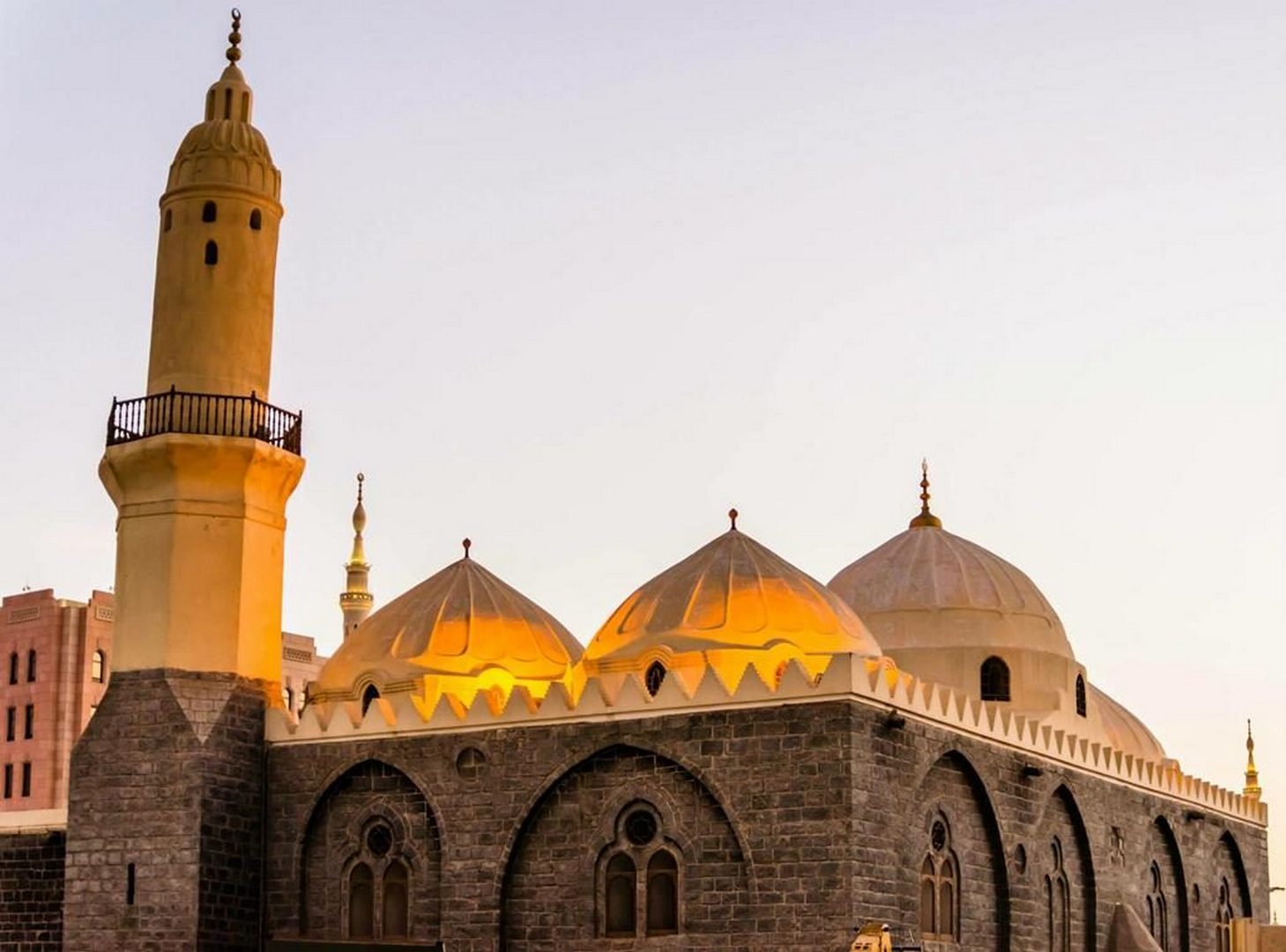Description
Property Name: Masjid Al Ghamamah
Inventory No: 966-4-8
Date of infill of the inventory form: 2010-05-22
Country (State party): Saudi Arabia
Province: Madinah
Town: Madinah
Geographic coordinates: 24° 27′ 57″ N
39° 36′ 25″ E
Historic Period: Early Islamic (until 660)
Year of Construction: 627
Style: Early Ottoman
Original Use: Masjid
Current Use: Madrasa
Architect: Unknown
Significance
The Prophet, peace be upon him, used to perform the Eid prayer as well as Al-Istisga prayers (a call for rain) in Al Ghamama Mosque and for this reason it is also known as the Mosque of Prayers. It lies about 500 meters south west of the Holy Mosque. One of the earliest mosques, it was restored by a number of the Caliphs and is currently subject to a high level of interest and care due to its significant importance.
The Mosque is located in the south-west of the Prophet Mohammad Mosque by 500 m, and the place of this mosque is the last place where the Prophet (peace be upon him) did the Eid prayer. The mosque is called Alghamama (the Cloud Mousque), because it was said that there was a cloud which blocked the sun light from the Messenger of Allah (peace be upon him) when he was praying at that Eid.
Its construction dates back to the time of the Prophet, may God bless him and grant him peace, and it was renewed in the Ottoman era, and it was recently restored during the reign of the Custodian of the Two Holy Mosques with its Ottoman architectural style.
Selection Criteria
iv. to be an outstanding example of a type of building, architectural or technological ensemble or landscape which illustrates (a) significant stage(s) in human history
State of Preservation
The mosque was built in the state of Omar bin Abdul Aziz, may Allah be pleased with him, then renovated by Sultan Hassan bin Mohammad bin Kalawon Al Salhi, before the year 761 AH, and then had other reforms in the reign of Sultan Inal year 861 AH. Then Sultan Abdul-Majid I did a major reform that kept the mosque well until recent times except for some maintenance in the reign of Sultan Abdul Hamid and the Saudi crown.
· Cleaning the roof.
· Cleaning beams.
· Clean floors.
· Repair bathrooms.
· Restoration of drainage channels rainwater.
· Treatment furniture.
· Maintenance of electrical wiring.
References
عمدة الأخبار ص181 ـ 183.
رسائل في تاريخ المدينة ص 8 ـ 17 ـ 41 ـ 42.
المساجد الأثرية ص231 ـ 236.
المدينة المنورة في التاريخ ص88.
مساجد في السيرة النبوية ص53.
المدينة المنورة تطورها العمراني ص135.
الأنصاري ,عبد القدوس : آثار المدينة المنورة (الطبعة الثالثة ,المكتبة السلفية ,المدينة المنورة 1393هـ/1973م).
Commission of Tourism and Heritage


